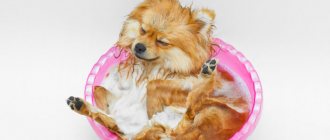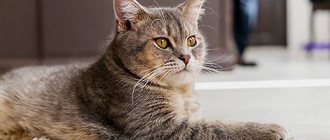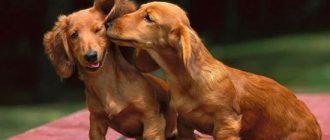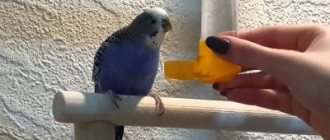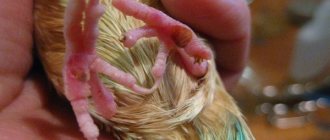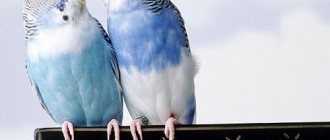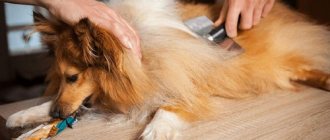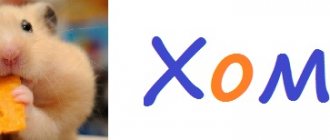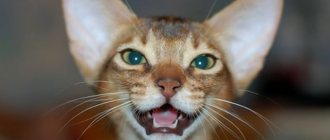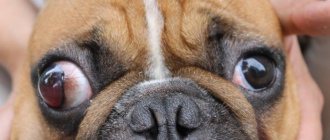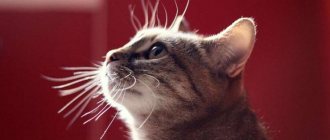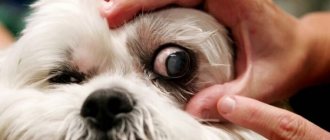- home
- Parrot
- Treatment
05/15/2019 Parrots are popular pets now.
Birds are kept in order to get a loyal and playful friend for life. In the modern world, it is possible to create all the conditions in an apartment or house so that poultry feels comfortable and remains healthy both morally and physically.
Plumage in parrots is one of the indicators of health. Only smooth feather cover can indicate a satisfactory condition of the pet. When the owner notices that the parrot's feathers are falling out, it is necessary to urgently look for the cause of such an ailment. Sometimes this happens naturally, and in some cases it requires treatment and special attention to the bird.
Environmental reasons
When a parrot goes bald for no apparent reason, the answer to the question “why?” often simple. The bird suffers from unfavorable living conditions. In most cases, this is the fault of the owner, who was unable to provide the bird with a normal home.
A parrot moults when its cage is too small. Frequent rubbing against the bars causes irritation on the skin, and it leads to loss of cover.
The skin also suffers from allergic reactions that occur for various reasons - from a new product in the diet to banal dustiness of the room. The pet is kept clean and warm, and the diet is adjusted to the recommendations of veterinarians.
A bird loses its feathers for more “minor” reasons. These include room lighting and air quality.
The lighting above the bird's house is carefully adjusted. The lamps chosen are not bright, otherwise the light will irritate the pet’s eyes, but not dim either – these cause the pet’s eyes to overstrain, which causes stress. Lamps whose task is to imitate daylight are not suitable for birds.
In the room in which the parrot lives, the air humidity is monitored. Low humidity leads to dry skin. Air quality also refers to the presence of foreign gases and vapors. In the room in which the bird lives, do not smoke or spray aerosols, do not use perfume, and do not burn anything caustic.
Descriptions of self-plucking syndrome
Self-plucking syndrome is a bird's excessive grooming of its own plumage. This complex behavioral disorder is poorly understood. It is more common in species of parrots such as lovebirds, macaws, cockatoos or grays. Rare, but can also be detected in budgies, Amazons and cockatiels. The bird plucks and bites off its feathers so methodically that over time it simply becomes bald.
Experts have compiled a list of factors that can provoke this disorder.
- The bird is bored or frequently stressed.
- The bird's diet is unbalanced and contains insufficient amounts of vitamins for its normal development.
- The correct conditions for keeping the bird are not observed. Frequent triggers may be low ambient temperature and/or dry air.
- Parasitic or infectious diseases.
- Genetic predisposition.
One of the causes of self-plucking syndrome.
Until now, specialists have not been able to identify the exact causes that precede the development of this pathological process. They, like the methods of treatment, are individual in each case. Therefore, as soon as the first signs of disturbances are noticed, you should show your pet to a good ornithologist.
The following symptoms should alert the owner of a parrot.
- The bird sits, ruffled, and ignores any stimuli around it. There are bald spots on the belly and lower part of the wings.
- Plucked feathers are uneven and frayed and bitten. At first, feather plucking occurs during hygiene procedures, but over time the process becomes almost continuous.
- In the process of plucking itself, the parrot can peck at the skin on which bleeding wounds form.
Psychological reasons
In the case when feathers fall out of the tail, or when the feathers on the bird suddenly fall out, suspicions of a violation of moral status are checked. To put it simply, the pet is experiencing a state of stress. This is a dangerous condition, since many terrible diseases develop from it, among which the loss of feathers or the habit of plucking them is a small nuisance.
A pet can become stressed for various reasons. First of all, this is caused by lack of attention, boredom and loneliness. The bad mood of the owner leads to mood problems - birds sense the emotional background of the person to whom they are attached. Moving, changes in environment, constant noise and unfavorable living conditions also have a negative impact.
Hormones
Hormones affect not only our lives, but also the life of a parrot no less.
As you know, there are a lot of hormones known, and they are produced by endocrine glands. We will be more interested in the pituitary gland and the thyroid gland (thyroid gland).
When the level of hormones drops towards deficiency or excess, this immediately affects the quality and growth of feathers.
If the problem is in the pituitary gland, then it is unlikely that anything can be done, since there is simply no treatment, but in the case of the thyroid gland, everything can be solved with simple treatment.
But don’t worry, problems with pituitary hormones are quite rare in practice, much less common than, for example, the disease that we will consider below.
Shedding is natural
When a bird goes bald entirely, without the formation of separate hairless areas, this is a natural molt in a parrot. In their natural habitat, shedding occurs once every two years, during the rainy season - usually spring or autumn. This process is not stopped. Molting is necessary to replace “old and worn out” covers with new ones that can protect the bird from external influences.
It doesn’t look scary, it often doesn’t frighten - the feathers come off in an even layer, without bald spots, and are promptly replaced by new, shiny, even ones.
Shedding due to shock
When a parrot sheds unevenly, mostly in the area of feathers and wings, it is a shock molt. It is equated to a stressful situation. Parrots are naturally shy. They are frightened by loud sounds, injuries, cruelty from humans, and the presence of other pets in the house (mostly cats and dogs that behave aggressively towards birds).
This kind of shedding can really be stopped. To do this, you will need to calm the bird - eliminate the source of anxiety, devote more time to communication and playing together.
Lack of vitamins
Vitamin deficiency significantly spoils the appearance of your pet. With a lack of vital substances in the diet, not only the feathers suffer, but also the nails, beak and skin.
To correct this problem, you will need to review your parrot's diet. Nutrition should be balanced. If the problem does not disappear after changing the food and introducing mineral supplements, contact a veterinarian. The doctor gives recommendations regarding food and, if necessary, prescribes a mineral preparation. The veterinary pharmacy also sells many over-the-counter medicinal supplements.
Prevention
To protect your parrot from pathological feather loss, it is worth eliminating the possible causes of this problem:
- provide a comprehensive, varied diet;
- create suitable living conditions;
- protect the parrot from stress;
- pay attention to your pet with games and conversations;
- do not use odorous substances and do not smoke.
Recommended vitamins
During molting, it is recommended to add minerals to the parrot’s diet:
- bone meal;
- chalk;
- sand;
- eggshells;
- shell rock
You can add brewer's yeast and vitamin complexes to the food, for example, Vitacraft, Gamavit, Vita-Sol 8 in 1, Beathar Vinka or others on the recommendation of an ornithologist veterinarian.
Diseases caused by mites and fungi
When a bird sheds and itches, the problem may be parasites that have settled on the skin. You can detect the presence of a mite or fungal infestation by examining the tips of fallen feathers. If they are covered in blood, and there are dried wounds on the exposed areas, the pet is infected.
Doctors make an accurate diagnosis based on laboratory analysis of scrapings from the exposed part. Such troubles do not go away on their own; it is necessary to undergo a course of therapy.
Causes of baldness
According to breeders, the loss of feathers on a bird’s body is a common phenomenon. The parrot is a capricious and sensitive creature. The body of talkative birds reacts sharply to any changes, both physically and emotionally.
What causes baldness? Breeders divide the reasons for the loss of feathers of their beloved pets into three groups.
Medical problems
There are no sweat glands on the skin of parrots; the skin easily moves in different directions. What does predisposition to various diseases of the subcutaneous tissue and epidermis mean? Budgerigars, lovebirds and masked parrots are especially susceptible to skin pathologies.
Skin diseases of talkative pets are difficult to cure. Birds itch a lot and tend to peck at itchy areas, which causes chronic irritation.
We should not forget that feather loss in parrots also has natural causes (molting). Owners need to be able to distinguish when a bird is molting and when it is sick. Signs of disease in parrots appear instantly, on the first day, and the symptoms progress as follows:
- Loose stools begin.
- The parrot refuses to eat.
- Areas of flaking, similar to dandruff, can be seen on the skin.
- The fallen feathers are dark, and there are bloody marks on the bases.
- The beautiful plumage on the chest and back becomes dull and brittle. The bird looks disheveled.
Natural molting does not leave such marks. All skin diseases that lead to feather loss differ in etiology and symptoms. Ornithologists include the following diseases as common ailments:
Problems with hormonal levels. Hormones are very important for bird health. In a parrot, hormonal production is carried out by two organs: the pituitary gland and the thyroid gland. As soon as a violation occurs in one of them, the growth of feathers slows down and they begin to fall out.
In addition to baldness, hormonal imbalances occur with a general darkening of the plumage and a decrease in weight in the bird. In this case, the veterinarian is only able to normalize the functioning of the thyroid gland by prescribing therapeutic measures to the bird. But it is no longer possible to cope with pituitary gland disorders.
French molt. A serious disease that affects young parrots. After 3.5-4 weeks of life, birds begin to lose their flight and tail feathers profusely (on the wings and from the tail).
The bird that was able to survive can no longer fly for the rest of its life (new feathers do not grow). She moves in short dashes or leaps. Such parrots are called “runners”.
Veterinarians consider the following factors to be the causes of incurable disease:
- When eggs are laid early.
- Past infectious diseases.
- Using sick birds for breeding.
- Unfavorable conditions for the reproduction of birds.
- Stress that develops in birds due to long, exhausting journeys.
- Numerous laying of eggs and hatching of offspring more than twice per season.
- Feeding food containing large amounts of vitamin A and a minimal percentage of vitamins K and E.
If your parrot gets sick, surround the bird with care and create optimal living conditions for it. The owner needs to pay special attention to the diet and breeding of sick parrots.
Fungal and tick-borne infections. Extremely dangerous diseases in feathered pets. Mites and fungal spores, ending up on the skin of parrots, provoke excessive loss of feathers and peeling of the epidermis. Wounds and growths appear on the surface of the skin. Symptoms of the pathology:
- Drying and cracking of birds' feet.
- The skin of the body becomes inflamed and red spots are observed on it.
- The parrot becomes unkempt, disheveled and sick.
- Peeling begins in the beak area, on the head and cere.
- Fallen feathers look shaggy, with crooked, unkempt tips.
- Feather loss occurs unevenly (foci of baldness are located on the butt, on the back or on the neck).
Parasitic mites gnaw holes in the delicate skin of birds at the base of the feathers. Because of this, the feathers that fall out have bloody bases. If you notice feathers with blood, immediately go to the veterinarian - the owner will not be able to overcome dangerous diseases on his own.
To combat ticks, doctors often prescribe Aversectin ointment - the bird will be treated with this product for 3-4 months. The bird's cage with all its accessories will also have to be treated. It is better to use Neostamazan (one ampoule for ½ liter of water). After disinfection, the cage and toys are doused with boiling water and dried.
Down eater. These are tiny parasitic insects that feed on keratinized skin scales and feather particles. Young chicks and juveniles especially suffer from them. Ecoparasites pose no danger to humans.
Parrots become infected with parasites through contact with a sick bird. The following symptoms indicate that your pet is sick with feather eaters:
- The sick individual completely loses his appetite.
- The bird looks lethargic, and the plumage becomes dull and expressionless.
- Feathers damaged by parasites develop holes - as if they were stitched on a sewing machine.
- The parrot is constantly itching, gnawing its skin, tearing out feathers on its belly and under its wings.
If no action is taken, the sick pet will die. To get rid of ecoparasites, the veterinarian prescribes treating the parrot with special medications. Veterinarians more often prescribe medications in the form of aerosols (Arpalit, Insektol, Celandine spray).
The preparations are sprayed at a distance of 20-25 cm from the bird for 2-3 seconds. Try not to hit the parrot in the eyes, ears, beak and nose. Repeated treatment is prescribed after 1-1.5 weeks.
The safest medicine for birds is Exner Petguard spray. Instead of an intexicide, the medicine contains lactic acid, which destroys parasites. It is harmless to birds.
Among the folk methods, tincture of chamomile or wormwood helps to get rid of the disease. Your parrot will also benefit from healing chamomile baths. Don't forget to thoroughly clean the bird's housing and accessories.
Natural causes
In parrots, feathers change for natural reasons. The bird molts, this process is called “regeneration”. If the pet is cheerful and cheerful, eats well, and plays, the owner should not be bothered by the bald patches on the sides of the pet. Parrot molting is divided into two types:
Juvenile. When a young bird is 1.5-3 months old, the first molt in its life occurs. Its exact arrival varies depending on the breed and conditions of keeping the winged pet. The change of feathers in young birds indicates that the chick has entered the puberty phase.
Juvenile molting ends safely after 2-2.5 months. A parrot, having renewed its outfit, is proudly called an adult bird.
The first moult for parrots is the most difficult - after all, the birds are faced with this for the first time. Feathers fall out profusely, forming large, frightening piles. The pet's behavior changes - it becomes irritable, aggressive, bites a person and sits, ruffled, offended by the whole world.
This behavior is normal, but if the owner notices loose stools, bloody feathers, or loss of appetite, he should contact a veterinarian.
Periodic. Changes in feathers are also observed in adult birds. Typically, birds molt after nesting (breeding period). You can tell that a female is ready to breed by the color of the cere (the area above the beak). Usually the color of this part of the body is cool (white, blue).
The cere is a hormone-dependent organ; with an increase in the level of sex hormones, its color changes, becoming dark, almost brown. The surface above the cere also changes; it becomes rough, convex and wrinkled. This change in females is a natural and normal phenomenon.
Periodic molts occur in birds 1-2 times annually. Birds react to a change in plumage with a slight increase in temperature and a change in mood (the parrot becomes lethargic, phlegmatic and passive). To facilitate the molting process and reduce this unpleasant time, veterinarians advise the owner:
- Increase the humidity in the room where the bird lives.
- Switch to special food designed for molting parrots.
- Feed your parrot a balanced diet during the molting period, which includes vegetables, herbs, sprouted grains and animal proteins.
- Diversify your diet with minerals and multivitamins. During this period, the bird especially needs calcium. Give your pet vitamins in liquid form (except for Radostin).
- Provide your parrot with the opportunity to regularly take water treatments.
Content flaws
Having acquired feathered pets, the owner will have to study all the nuances in the behavior and habits of cheerful, talkative birds. A parrot is a social creature that requires attention and communication. This bird is sensitive to changes in the habitual behavior of the owner and other household members. Baldness of birds can begin due to:
- Boredom if the parrot spends a long time alone, in the absence of fun and toys in the cage.
- Swearing, bad mood among household members. Social birds react sharply to manifestations of any negativity!
- Poor nutrition. Due to a lack of vitamins in the menu (especially B and A), the parrot loses feathers and hairs on its forehead and around the eyes.
- Smoke. You should not smoke cigarettes or use aerosols (hair spray, air freshener) near the bird.
- Excess or lack of lighting.
- The cage is too small.
In a constantly hot room, birds begin to permanently molt. To regulate and restore normal body temperature, birds shed their feathers. It is not difficult to diagnose such a problem - pay attention to the noticeable revival of pets after airing the room, increased interest in water procedures.
Due to all of the above reasons, the unfortunate inhabitants of the cage begin to self-pluck feathers with subsequent urges to eat them. This is a real disaster that is very difficult to stop. Parrots die if urgent measures are not taken to improve their maintenance.
Breeders recommend using a special collar during the rehabilitation process that prevents the parrot from tearing out feathers. You can buy a collar or make it yourself, from two dense halves with a hole cut in the center with a diameter of 3-5 cm (depending on the size of the pet).
The bird will have to wear this “decoration” for 8-10 months. To make it convenient for your pet to eat and drink, the water bowl and feeder should be hung higher and closer to the perch. The collar is removed when the parrot has completely restored its plumage. During wearing, make sure that the reasons that provoke this behavior are eliminated.
And be prepared for relapses. Some birds return to self-plucking after 2-3 months. In this case, the collar will have to be put on again and not removed for 1.5-2 years.
Stressful conditions
Favorite birds go bald profusely due to negative, exciting situations, leading to the appearance of shock states in birds. Causes of shock shedding:
- Great fright.
- Change of owner.
- Rough treatment.
- Constant loud noise.
- Moving to a new apartment.
- Forced catching of birds by hand.
The owner's rash actions lead to severe fear when he abruptly picks up a new, not yet accustomed parrot or grabs a bird while sleeping. During shock molting, the pet loses some of the feathers in one area of the body (most often the coverts or tail feathers fall out).
The plumage will soon grow back, but the bird should pay attention during this difficult period. Protect a parrot experiencing shock molting from drafts and provide your pet with a nutritious diet. Include foods that have a beneficial effect on feather growth in your menu: vitamins with calcium, eggshells, cabbage.
Hormonal disbalance
Hormonal imbalances often occur in birds during puberty and sexual activity. When any hormone ceases to be produced, molting occurs. “Hormonal molting” occurs unevenly; the parrot sheds heavily in the chest, head and paws.
It is advisable to contact a veterinarian. Often such situations are fixable, and treatment can be done with one medication.
Treatment
Only a veterinarian can make a correct diagnosis of a parrot, but you can first assess the pet’s condition yourself. First, you should observe the pet’s behavior, improve its nutrition and evaluate its living conditions. Then you need to catch the bird and examine it very carefully to find lesions or parasites.
An important factor for quality treatment is timely seeking help from a veterinarian. In addition to the treatment suggested by the doctor, you also need to:
- improve nutrition;
- wash the cage, change the dishes, refresh and humidify the air;
- do not disturb the bird, but at the same time show attention to it.
Diagnostics and therapy
Feather loss occurs in parrots of different breeds. It is not possible to immediately determine the cause by eye. The first actions upon detection of loss are:
- Observation of behavior. If your pet behaves apathetically, the cause of shedding is stress. If he scratches himself against the bars of the cage, it may be due to parasites on the skin.
- Careful inspection. Baldness that occurs evenly is equated to natural shedding. In the case of partial, carefully look at the bald areas.
- Review of diet. More fresh foods and mineral supplements should be added.
The same actions will help prevent the development of molting that has not yet begun.
Basic recovery principles
So, the parrot underwent treatment and got rid of the reason why his body was going bald. After this, you need to help him regain his strength.
- You need to diversify your diet.
- The parrot's place of residence (aviary or cage) is well cleaned.
- The parrot should be left alone if it is not in the mood for games. Persistence puts the bird under stress.
- If feathers fall out again, immediately contact a specialist.
How does this happen?
The process of getting rid of old feathers and growing new ones takes quite a long time. The parrot sheds gradually; the bird never remains completely bald. It all starts with the fact that down and some feathers fall off from the bird. Then the amount of shed cover increases, while feathers still remain on the parrot’s body. If the feathers fall out in clumps or the bird has noticeable bald patches, consult a doctor. Shedding should not occur so quickly and cause severe discomfort to the pet.
During the molting period, a healthy bird feels well, but may behave somewhat unusually. This period is stressful for the bird, so it can either show aggression or be too quiet. It all depends on the character of the bird. As a rule, the parrot adheres to its own routine, but it wants to communicate with its owners a little less. Therefore, if you realize that your parrot is molting, do not try to take it out of the cage and pick it up.
In some situations it is worth restricting birds from flying. If you notice that a young bird is shedding old feathers on its wings, flying may become unsafe for it. She may lose her balance or be unable to land correctly.
